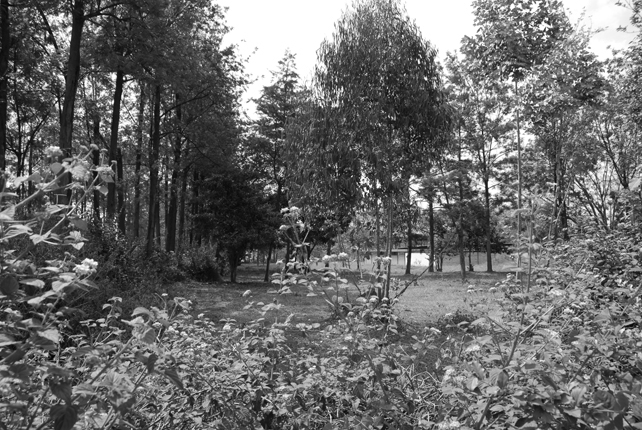
|
The ETO site is located in the Town of Kigali. Click on the image for a slideshow of photographs. All photographs © 2002-2008 Jens Meierhenrich except Photograph 9 © Kigali Memorial Centre. |

|
The ETO site is located in the Town of Kigali. Click on the image for a slideshow of photographs. All photographs © 2002-2008 Jens Meierhenrich except Photograph 9 © Kigali Memorial Centre. |
The acronym ETO stands for École Technique Officielle, or Official Technical School. Kigali’s ETO was housed in a series of buildings in Kicukiro, on the outskirts of town in the direction of the Bugesera region. It earned notoriety as the safe haven abandoned by the United Nations (UN) in the early days of the genocide. On April 11, 1994, the detachment of Belgian paratroopers that had been guarding the school pulled out, leaving the many Tutsi who had sought shelter at ETO to their fate—and to the Interahamwe militia who were waiting at the gate.
The ETO site is a site of memory but not a memorial site. No sign or structure reminds visitors of the atrocities—and betrayal—that took place here. Only the old ETO gate has survived on the grounds that now house the Kicukiro College of Technology.
In a recent movie, Shooting Dogs (the U.S. version is titled Beyond the Gates), British director Michael Caton-Jones recreated—taking substantial dramatic license—the events that transpired at ETO. The most important difference between fact and fiction: The majority of the 2,500 or so victims were not killed on the school grounds but led on a death march to a garbage dump in Nyanza-Rebero, a ridge overlooking the city.
As one survivor, Beatrice Nikuze, recalls in a collection of testimony published by the Kigali Memorial Centre: “The UN forces packed up and left us at the mercy of the mob. As soon as they left, the policemen took us to Sonatubes Société Nationale des Tubes [a tire factory], where we stayed a short time. A man called Rusatira came and said, “Take the garbage to Nyanza.” [...] By “garbage”, he meant us. [...] When we reached Nyanza, they gathered us in one place and started throwing grenades at us. After many people had been killed and others injured, their leader said there was no need to waste their ammunition. He said machetes and clubs would easily execute us because we were wounded and very weak.”
Copyright © 2010 Jens Meierhenrich. All rights reserved.